
 |
The Dark Side of Travel Gary Podolsky MD
Goals: 1.To Illustrate the Geography of Human and Narcotics Trafficking 2. To discuss the consequences resulting from travelers engaging in the sex trade and illicit drug use abroad. Both the immediate effects of people directly involved (microeffects) and the later effects locally and internationally (macroeffects) are covered. 3. Discuss positive interventions that may limit harm including awareness, prevention, working with local and international authorities to uphold laws effectively, and promotion of stabilizing forces that may act as limits on exploitation. 4. Discuss interventions to decrease drug use in travelers
Introduction
International Travel has the ability to open people to new positive experiences but negative experiences can also result from travel. Interacting with other cultures introduces new ideas and allows for introspection and comparison with their own home culture.
Such interactions may be beneficial for both the home and visitor countries.
Not all consequences of travel are good. Physicians recognize problems like infectious diseases, trauma and accidents. Other ills of travel include social issues such as sexually transmitted disease (STDs) and substance abuse. STDs and clinical toxidromes from street drugs are well described. Traditionally medical intervention for travelers focuses on the immediate effects such as the infectivity and transmissibility of STDs from a Public Health perspective and the immediate effect of the illicit drugs. This discussion will focus instead on the societal destabilization brought on by travelers seeking sexual encounters with locals and using illicit drugs. Other black market and grey market activities may also indirectly support organized crime. Black market economies maintain the status quo in countries with poor human rights. This effectively block social development. Grey market is defined more ambiguously than illegal black market trade but both contribute to underground economies that defy international law and support terrorism. Albanians and The Drug Trade Nearly two years after NATO troops drove Serb forces from this region, rebels are believed to still be skimming profits from drug and sex slave trafficking to fund illegal arms purchases for ethnic Albanian rebel movements. This trafficking has allowed both the Kosovo Liberation Army in the southern Serbian province of Kosovo and the National Liberation Army in Macedonia to be outfitted with the latest in rocket-propelled grenades, machine guns, mortars, sniper rifles and night-vision goggles. Of the nearly 1 million women trafficked as sex slaves worldwide each year, an estimated 200,000 pass through the Balkans, making their transfer through the war-torn region one of the area's most lucrative businesses. Bosnia, Kosovo and Macedonia are filled with tiny brothels, where women, mostly from Eastern Europe and the former Soviet Union, are forced to work as prostitutes under the threat of death. MSNBC.com 1
Attitudes in Travelers One observed trend among longer-term travelers is that once away from home the traveler may begin to feel that they are no longer subject to the same rules that they are at home.
Long-term expatriates or travelers going away for extended periods of time (greater than 6 months) no longer have regular contact with a family physician. Positive messages such as advice and counseling regarding smoking cessation, drinking and driving, and safe sex, which are constantly reinforced from a family medicine perspective, may be ignored and superceded by the values of the new country.
Eg. The widespread chain-smoking in Europe presents a very smoker-friendly environment that may negate positive smoking cessation campaigns.
STD awareness counseling and discussion on safe sex prior to international travel have been promoted by many travel medicine Practioners. However, there is evidence that such discussions on safe sex practices have no benefit on prospective travelers actually changing their sexual practices abroad.
Safe sun practice guidelines, such as wearing hats, using SPF sunscreen appropriately and avoiding unnecessary sun, are frequently ignored by travelers. Travelers abroad in equatorial heat or at high altitudes frequently do not follow safe sun practices. Often locals of high-risk areas themselves are not educated in proper protection and present as examples of unhealthy behaviors.
Travelers are exposed to a variety of beliefs about health and are less likely to follow advice given by health professionals when it conflicts with ease and temptation. This presents a significant public health problem, as these people are "out of the system" and not receiving the full benefit of preventative health programs. Overcoming these resistances is a major obstacle for travel medicine providers.
Part 1. The Sex Trade and World Trafficking Syndicates
Sexual Tourism Sexual tourism may be defined as traveling solely or mostly for the purpose of engaging in sexual encounters with local people. For our purposes we will define this strictly as stated recognizing that many travelers may have consensual relations with other travelers or locals whom they meet, that fall within normal human relations.
Exploitative Sexual Tourism For he purposes of our discussion exploitative sexual tourism 2 involves the traveler using their position as a rich visitor manipulatively in order to engage sexually with locals. In many cultures and countries this is acceptable morally and legally. Usually health care professionals label this as high-risk activity and counsel abstinence, use of condoms and awareness of STDs. This is a politically safe stance allowing the professional to care for their patients without allowing transference or counter transference to interfere with treatment. However, it ignores the issue of whether exploitation is also taking place. We recognize the individual health risks to the traveler and to the local, but seeing as this is covered in great detail by a number of sources and is a frequent public health concern we will instead focus our discussion on the societal effects of sexual tourism.
Colonization of Countries by STDs Many countries have acquired reputations as " hot spots " for both sexual adventures and sources of disease.
STDs outbreaks often originate from "first world" countries contrary to public perception. Countries like Haiti and Thailand originally had HIV and other STDs imported into their country by sexual tourists. Theses countries are now viewed as exporters of STDs. The original native culture was not excessively promiscuous or heavily wrought with disease, but as sex-seeking travelers frequented these countries an environment was created that allowed for the development of a high concentration of HIV.
On the individual level-counseling travelers on how not to get STDs may be helpful for individuals, but this must be considered in a global arena. Effective measures must reduce diseases imported into the developing countries, although for Haiti and Thailand this approach is much too late.
The Exploitive Nature of Prostitution and the Organized Trafficking of People Economic pressure and disparity between relatively rich travelers and relatively poor women creates a driving force for an ongoing problem of exploitative prostitution.
The degree of exploitation becomes difficult to define since different societal norms are involved. Many countries make prostitution clearly illegal yet it is widely tolerated.
For this discussion and to clarify our purposes we will define exploitative prostitution as including: the exploitation of women (or men and children), nonconsensual sex, the influenced of dire poverty, the trafficking and deception of sex workers, or the involvement of children. 'Children' may also include those who are sexually, emotionally, or intellectually immature or disadvantaged even if they are above the age of consent. The age of consent may be as low as 14 (Mexico) or up to 18 yrs. As client and sex worker are likely to come from different cultures, age of consent becomes difficult to determine.
Case study While attending a cruise in international waters a Mexican 16-year-old girl engaged in consensual sex with a man of 21. The girl's parents wished to initiate a charge of statutory rape against the man. The ships doctor was consulted to perform a forensic rape examination of the girl to establish evidence. He was conflicted because although the situation was contrary with both his and the parent's morals, however in this situation nothing illegal was done .
Various permutations of ages and relationships may occur. Guidelines that may help determine if an abuse of authority has occurred, may include: • Age of minor and the age of consent in their own country. Their own mental development and maturity is also important. Emancipated minors may be permitted to marry younger in some cultures. Likewise, a 16 year old living independently and working to support themselves may be significantly more mature than a 25-year-old University student living in their parent's basement. • Age of Adult • Relation or position where undue influence exists (teacher, doctor, counselor) may be abused. Depending on the degree of authority a more significant degree of exploitation may exist.
Case study. A physician overseeing a medic with the Canadian Military Summer Cadet camp became indirectly involved with a different form of abuse. This medic aged 27 had began to use his position examining 14-16 year old cadets in order to influence them and spend time with them outside of duty hours. He began to fabricate reasons to spend more time with the female cadets. During a patient transfer he designed a reason to bring a young 16-year-old girl to accompany him, instead of with another adult. Due to the nature of this transfer he and the girl were alone for 8-10 hours and he proceeded to take her home and they watched pornographic movies together. The cadet camp learned of this. Further evidence of his inappropriateness with the female cadets (sexual) and male cadets (verbal abuse) also accumulated.
Because of the Medic's status (he was Reserve Force attached to Air Force and loaned to the Cadet Cadre department) it became very difficult to charge him. Eventually because of the complicated ladder of authority (and all military departments refusal to get involved) Provincial Social Services were involved.
These cases illuminate that when there is a strong suspicion of a sexually exploitative relationship it is obligatory to report this without fear of retribution provided the report is made in good faith. These issues may be complex and it may be prudent to seek legal counsel to help determine this.
Reporting Suspected Cases of Abuse The issue of the exploitativeness of a specific relationship may be difficult. When called in to report a possible case it is best to seek local advice from the appropriate authority. Locally this may include Social Services, the Police, the College of Physicians and Surgeons, or the Teachers Association. Away from home it is difficult to police or report suspected exploitation. New Child Exploitation laws are being developed that will imprison those guilty in their home country but this is difficult to enforce and the total number convicted has been low.
Preventative Strategies One strategy to end or minimize exploitation of sex workers is to eliminate some of the driving push and pull factors.
Push factors include: economic disparity, breakdown of the family unit, and lack of supports that may drive people towards exploitation.
Pull factors include the allure of easy money, 'heroine chic' and the glamour of the streets ("The Pretty Woman (Julia Roberts) Effect")
Child Prostitution This represents the most extreme form of abuse and exploitation. The widespread belief that sex with a virgin ("cherry girl") will "cleanse" one of HIV has contributed to an increased uptake into child prostitution as younger and younger children are increasingly brought into the sex trade many acquiring HIV infections.
These children are exposed to diseases and trauma. The psychological damage may permanently scar them. 2
Counseling and support are needed for these victims. In some programs previous victims of the trade help out in counseling new children that have been recently rescued from the Sex Trade.
Public Perception and Sexual Tourism Public awareness has focused on specific countries such as Thailand or Cuba as evidence for sexual tourism is well established. Sexual tourism may occur anywhere and it is easy to overlook our own country as well. Due to a recent crack down and "awareness" of sexual tourism in Thailand much of the activity has migrated to Cambodia instead.
Case study One Doctor involved with fighting Child Sex Trafficking had recently revisited a Thai village well known for its involvement in previous child sexual trade and observed the tourism was dead with none of the shops or businesses doing well. When asked, one villager ruefully replied that the abuse was still going on a few miles away from the eyes of observers. While the village was now politically sanitized very little actual improvement had taken place.
Trafficking of women Forcing young women into prostitution represents a modern form of true slavery. Away from their home country and faced with a different language and culture, they are more easily managed, particularly if given street drugs. These women are significantly cut off from both their original and adopted countries. In Europe alone, officials estimate that more than 200,000 women and girls - one-quarter of all women trafficked globally - are smuggled out of Central and Eastern Europe and the former Soviet Republics each year, the bulk of whom end up working as enslaved prostitutes. Almost half are transported to Western Europe. Roughly a quarter of them end up in the United States. Human rights activists say the numbers do not tell the full story, because most women remain silent rather than turn to frequently corrupt authorities for help. Often women are approached by locals to emigrate for legitimate purposes- marriage proposals from suitors they believed they knew, for jobs such as babysitters, secretarial or data entry work (Romania, Ukraine and other Eastern European countries) and but then they are forced/coerced into prostitution. Often situations are set up that actually encourage a growing market for prostitution. One example is of the growing number of UN peacekeepers stationed in the Baltics. Case study. Natasha, a Moldovan woman who had been abducted by a false suitor and transferred as a slave to Macedonia to service UN peacekeepers stationed there tells her story:" Besides the Albanians and Macedonians, there were men from "France, Germany and the United States," Natasha said, referring to soldiers from the NATO peacekeeping mission in Macedonia and nearby Kosovo."They were as bad as the rest," Natasha said. "They did anything they wanted to us. And besides, if Meti heard me asking them for help, he would have killed me.": 1
Human trafficking has become more widely addressed in recent years with increased awareness. Human rights groups try to rescue these women. But while tens of thousands of women go missing each year, only a few hundred make their way home with the organization's help.
What is being done now? Various organizations have begun to set objectives and goals to find effective strategies. This becomes very complicated since often corruption and bribery is taking place among law enforcement officials themselves .
Mohamed Y. Mattar, S.J.D.Adjunct Professor of Law and Executive Director, The Protection Project John Hopkins University School of Advanced International Studies Some barriers to helping trafficked women are that not all countries agree that trafficked women are victims and some place blame (illegal entry to work, using false documents, prostitution) on the woman and not on the pimp. Current efforts are trying to shift the focus from criminalizing the behavior of the trafficked person to punishing the trafficker. Distinctions must be made in the law between women forced into involuntary prostitution from women who voluntarily travel from one country to another for the purpose of prostitution. Only the former are truly trafficked. These women are also vulnerable to revictimization . Often once "rescued" and sent home they may be resold by the same organization, which may include their own relatives! Revictimization often occurs due to the lack of employment opportunities upon the victim's return home, as well as to the difficulties faced by the victims in reintegrating into their communities. As a part of preventing trafficking, a state must also educate potential victims of trafficking as to the dangers of trafficking. The state must initiate informative campaigns targeting the "vulnerable" groups or "high risk" groups within society. All of these constitute necessary preventive measures that a state is obligated to enact as a part of its international obligations. Consequently, failure of the government, or its inaction, in preventing trafficking in persons constitutes a violation of its obligations under international law.
The United Nations Office of the High Commissioner for Human Rights (OHCHR) Work on Trafficking 4
. The OHCHR Trafficking Programme was established in March 1999. Its objective is to work towards the integration of a human rights perspective into international, regional and national anti-trafficking initiatives. The emphasis is on legal and policy development. The Programme does not aim to undertake large projects or to duplicate initiatives that are being undertaken elsewhere. Instead, as far as possible, OHCHR tries to act as a catalyst and a support for the work of others." "At the international level OHCHR has focused attention on the negotiation of two Protocols to the Convention against Transnational Organized Crime, which were adopted by the United Nations General Assembly in November 2000. The first Protocol deals with trafficking in persons, especially women and children. The second Protocol concerns the smuggling of migrants" .
The European Union has also identified other important points: 5
United States: Protect Act 6 " In 2003, I signed the Protect Act , which allows U.S. law enforcement to prosecute Americans who travel abroad and engage in sex with minors without having to prove prior intent. The Protect Act expands the statute of limitations to the life of the victim for crimes involving the abduction and physical or sexual abuse of children in virtually all cases. The Protect Act imposes strict new penalties, doubling the maximum sentence for U.S. citizens who travel to foreign countries to sexually abuse children."- George W Bush
Department of Health and Human Services helped Covenant House establish a nationwide, toll-free, 24-hour hotline to report incidents of trafficking. Victims and those who know about their plight can call 1-888-373-7888
Other Interventions
Ukraine In 2005, the Yuschenko government of Ukraine made prevention of Trafficking Ukrainian girls a top priority.
Canada Romania has been in the news recently because of fast track immigration status for Romanian exotic dancers into Toronto, Canada with subsequent diversion into Prostitution. Widespread criticism of how the Liberal government had allowed this has led to this entry portal being closed.
Romania MTV Romania has begun a countrywide educational program addressing Human Trafficking from within its borders. ( www.mtv.ro ). Bucharest has now established a Human Trafficking Center headquarters inside the House of the People, the tyrant Ceasescau's former palace residence. In November 2000, agencies of 11 Balkans countries established the Regional Center for Combating Transborder Crime to tackle the flourishing triad of traffic in humans, drugs and guns. The countries of Albania, Bosnia-Herzegovina, Bulgaria, Greece, Hungary, Macedonia, Moldova, Romania, Turkey and Yugoslavia have joined to create the Southeast European Cooperative Initiative, or SECI, an American-inspired and assisted operation that began a coordinated war on trafficking in January 2001.
At present there are many non-governmental agencies also dealing with human trafficking 7
There is a diversity of approaches to Trafficking and one major goal of these agencies is cooperation to improve efficiency and eliminate corruption.
Figure 14 Advertisement in Odessa for American Marriage Agency. This promises introduction to elgible Ukrainian women and hints of more
Part 2. The International Illicit Drug trade
The international distribution of illicit street drugs is a well-connected network that has many broad reaching effects.
Popular acceptance of drug use both at home and abroad has led to complacency and familiarity. 8-10 Because of the dangerous and clandestine environment associated with drug trafficking, dealers are frequently associated with bribing, war, crime and violence as well as Human Trafficking.
Drugs and Travelers Health Besides clinical toxidromes drug use in travelers has diverse adverse effects including: psychological effects, motor vehicle accidents, precipitation and exacerbation of schizophrenia in susceptible people, and forced evacuation of travelers due to mental disorders. 11-20
Travelers are increasingly being recognized as an important group to target for early intervention and prevention as drug use in travelers may lead to further addiction at home. 21
The Drugs Out There Heroin Heroin is the sticky gum from the Eurasian poppy: Papaver somniferum ("maker of sleep") was introduced by Arabs from the Mediterranean to Asia in the 12 th century.
Presently it is widespread in India, Myanmar, China, Pakistan, Laos, Thailand, Uzbekistan and Afghanistan. These poppies are grown in cool plateaus above 500 feet.
They are planted at the end of the wet season (September-April).
The poppy heads are scraped after the petals fall off. This releases an oozing sap that is collected and packed in banana leaves.
Heroin processing involves cheap labor with hard work Entire families are involved in this work. (Similarly, cotton and coffee also involve exploitation of slave labor). Crude opium is transported out of hills via pack animals or amid escorts to middlemen for further distribution. Many people who grow opium also become addicts themselves.
Heroin can be snorted like cocaine or smoked and is increasing in popularity. In one analysis heroin or morphine were responsible for 41% of drug related deaths.
Heroin purity was 7% in 1984 and is now up to 36% today.
Heroin enters the USA from about 11 different countries. The DEA estimates it stops only about 30-40% of drugs from entering the USA.
Cocaine and Crack Cocaine Crack is now the American drug of choice. Most gang wars are over the issue of who will be selling crack cocaine. The life expectancy of a crack user is 5 years. Cocaine costs $100 - $150/g. Cocaine users tend to be male, white, and in their 30's.
Crack is more of an inner city drug and may be smoked but may also be cut with other common items like sugar or baking soda. A kilogram of Cocaine enters the US sells for between $10,500 - 40,000 and a gram will go for $20 in Miami to $250 in Honolulu.
The cocoa bush is originally native to South America and takes two years to mature. Its leaves are picked and ground. One hectare yields 2.7 metric tones of leaf, which gives 7.44 kg of cocaine. It takes 363 kg of leaf to make 1 kg of cocaine. The amount of active ingredients depends on the alkaloid.
The major cocaine producer is Columbia although Peru, Bolivia, Ecuador, and Mexico also produce it. In Columbia cocoa may be used for tea, chewing and traditional ceremonies. This allows for 12,00 hectares to be legally grown.
Annual cocaine production increased to 763 tones in 2000 facilitating increased distribution to Poland and the Czech Republic. Columbian cocaine is shipped in multitonne sea cargo ships or in 8-ton shipments to Mexico, Central America and the Caribbean where it is later redistributed to Europe and North America. Eighty five percent of North American cocaine is Columbian. In Columbia 1kg costs $1,200 while in the US it is worth $15,000-25,000.
Cargo planes are met by smugglers in high-speed boats off coast (images of Miami Vice speedboat chases are not far off). Small plane also will drop drugs inland at drop off sites
Less geographic dependant drugs:
Cannabis/Marijuana/ Hashish It can be grown anywhere. Hydroponically grown marijuana has a higher Tetrahydrocannibinal (THC) concentration ranging from 5-30% than "organic weed". Hydroponically grown marijuana costs $1,000-2,5000/pound in large cities. The regular type may cost $500/pound. Marijuana is not a high priority for drug enforcement agencies since it is bulky, has a low profit margin, and is easily homegrown. Although not always legal, it is permitted in many European and Asian countries so while they may not have penalties for consumption but do have fines for dealing it.
Although perceived as a soft drug high THC concentration products may be classified as hard drugs. Marijuana has been shown to exacerbate or precipitate mental illness in users. 22, 23
Pills (Methamphetamine, Ecstasy, Nitrous Oxide, Roofer, GAB, LSD) These may be produced anywhere and transported and sold for a large markup.
The Drug Economy
The United Nations estimated that the narcotics industry dealt $400 billion US in 2000 servicing 190 million addicts. In perspective this is twice the world Auto Industry, greater than Big Oil and Gas companies, and the Pharmaceutical companies.
Only the world's Arms Trade worth $800 billion is greater. In the United States $87 billion US dollars require money laundering every year.
Dangerous conditions are actually helpful to keep the pipeline of drug distribution running smoothly, as this helps organized crime cover up its activities.
Drug lords, warlords, corrupt politicians and cops run some of the world's most dangerous regions. In Mexico authorities estimate that the Cali cartel made $30 billion per year, and Gulf cartel $20 billion. In the absence of other economies, bribes and guns are used to enslave people to harvest and supply drugs.
Markets of the Drug Business Drug business is dependent on major Western markets flowing from growing centres like Colombia and Afghanistan to Western consumers via middlemen.
United States: This is the largest work market with 14.8 million drug users (National Household survey on Drug abuse).
3.5 million people are dependent on illicit drugs with 8.2 million more dependent on alcohol. In 1998, Americans spent $66.5 Billion on drugs. With a further breakdown: 39 billion ......................................................... Cocaine 12 billion ......................................................... Heroine 2.2 billion ........................................................ Methamphetamine 11 billion ......................................................... Marijuana 2.3 billion ........................................................ Other As trends go crack use is down, but heroine and marijuana are up. The drug business is a calculated business that seeks to expand its profitability be market expansion, recurring customers, and managing supply and demand. This industry is driven to develop cheaper more profitable drugs while getting more users on board to replace dead or gaited customers. This parallels actions of the tobacco industry. Europe is a major drug consumer. Many port cities are involved with drug trafficking and have a higher proportion of addicts (Amsterdam, Marseilles, and the Baltics). Some notable patterns other among countries: Poland produces 20% of Europe's amphetamine and is a major base for Chinese and Columbian drug growers
England : has 100,000 heroin addicts and is a major consumer of hard drugs Heroin comes from Afghanistan via Pakistan. Marijuana arrives from Morocco. Cocaine enters from South America via Amsterdam.
Figure 15 Entry of drugs to England: Cocaine from Colombia via Amsterdam (white), Marijuana from Morocco (dashed), and Heroine from Afghanistan via Pakistan (black)
Italy : Has 200,000 cocaine users with 150,00 addicts Three major cocaine organizations: Calabrian Ndrangheta. Neapolitan Canorra, and-Sicilian Mafia all work with the South American cartels to transport and sell cocaine in Europe. Most cocaine enters Europe by mafia controlled ports
Germany : Increasing use of cocaine. Entry ports of drugs into country are Hamburg, Bremen, and Rostock. Frankfurt major air terminal for Europe bound mules arriving from Africa and Asia. Frankfurt is also the major Airport in Europe.
Greece has an estimated 80,000 heroin users. Greece is a transshipment port into Europe from Turkey by road, sea, and air.
Bulgaria : Lax airport security allows cocaine smuggles to enter into Europe. Bulgaria is also a major route from Turkey to Europe for West Asian drugs.
Cyprus : Used as meeting ground and for money laundering for Russian mafia
There are presently 20,000 off shore companies in Cyprus. It is also positioned as a transit point for drugs entering into the Balkans.
The Balkans: Primarily Yugoslavia was a well-established route from Asia but after being breakup this route was disrupted. Now most Asian heroin comes from Albania, Macedonia, and Bulgaria. The Albanian mafia is actually stronger than the Albanian government and facilitates smuggling heroine to Germany.
The Albanian mafia (Kosova Clan) maintains close ties with the Italian mafia and exerts its criminal control over most ports and entry areas.
Russia The Russian Mafia used to consist of 785 organized groups in 91 and but had grown to 5,691 in 1994. Countrywide instability has occurred in the war with Chechnya (December 1994) and second conflict (1999).
Crime has increased with three million crimes recorded / year and among them 7,000 unsolved murders/ year. Many of these murders were committed with silencers at close range using weapons that are police or military issued. The Mafia is getting stronger and now spreading its influence into Israel and Europe. One half million women arrive in Europe from USSR to work as prostitutes (UN report 2000).
20 criminal gangs control Moscow with 5,000 members.
There are four hierarchical levels of the Russian mafia • Shopkeepers that sell goods inflated in price to afford protection money. • Enforcers - also involved as pimps, drug dealers, and gunrunners. • Businessmen steer lucrative deals to the mafia. • State mafia - Politicians allow low level to function without influence.
Bribes in Russia A Danish think tank funded by World Bank estimates that Russia spends $36 billion in bribes/ year (12% of GNP).
By geographic position Russia is a major drug producing, shipping and consumption country. Corrupt and inefficient police and border guards facilitate transfers.
Drugs from the Golden Crescent (Pakistan, Afghanistan, and Iran) are sent to Tashkent, Uzbekistan or to state of Chechnya, Tajikistan, Georgia, and Azerbaijan.
Major growing centers in South Russia/ Ukraine.
Foreign troops in Balkan has displaced traditional routes into Europe so the new route is from Afghanistan to Tajikistan to St. Petersburg to Cyprus then to ports on the Black Sea and Mediterranean Figure 16 a. Drug trade route to Balkans: Afghanistan to Tajikistan to St Petersburg to Cyprus for Balkans b. Drug Entry into Russia from Pakistan, Iraq and Afghanistan for later distribution. Flowers show Growing centres in Southern Russia and Ukraine
Russian drug trends There are an estimated 5-7 million drug users in Russia. Hashish is the drug of choice with 2.5 million acres of marijuana cultivated. 80% of Moscow drug dealers are Azerbaijanis. Moscow banks are used to launder money together with Sicilian mafia and Columbian cartel.
Total drug consumption in Russia is 25 million US$ (USA drug consumption is 500 billion US$) Russian drugs are cheaper than in the USA with1 kilo of cocaine is $15, as compared with $200 in the USA.
Trans-Caucasus region : Chechnya and Russia have both been involved in the dug trade and current conflicts must also be viewed with the understanding that a great deal of drug trafficking is going on in this region. The Chechnya mafia is deeply involved in the drug trade and flow of weapons. Russian military are also involved in drug the trade. Afghanistan (The Golden Crescent which also includes Pakistan, Iran and Iraq) ) Under the Taliban heroin production flourished in the 1990's. A drought severely affected poppy growth but presently Afghanistan is once again a major supplier.
In 2002, there were 30,750 hectares cultivated each hectare yielding 41 kg of opium.
The Taliban itself was against the consumption of drugs but tolerated the growing of poppies. It was estimated they made $10-75 million from the taxation of opium.
Opium transport goes via Baluchi and operates out of Onetta, Pakistan. They also move drugs through Pakistan to Iranian and Turkish buyers. Most opium is processed into heroin in Turkey and later sold in Western Europe.
Figure 17 Golden Crescent: Drug Flow from Afghanistan into Pakistan then Pakistan to Turkey, Iran and Iran
The Golden Triangle (Thailand, Myanmar, Laos)
Figure 18 Conceptualisation of the Golden Triangle involving Myanmar, Thailand and Laos
Thailand : Is a net importer of hard drugs and the majority go to western countries 50% of Myanmar opium goes to the US.
The Thai opium crop is threatened by Thai government eradication program but insurgent groups involvement prevent efficient policing.
Myanmar : Produces 2,300 tons of raw opium/ year, which accounts for 70% of the world's heroin produced. There is lack of law enforcement by the totalitarian government Myanmar has the right altitude and climate for poppy growth.
Tourists may find locals belligerent if asked about their occupation since there is widespread participation in Drug Trade.
Latin America Heroin is a booming economy in Columbia and Mexico. Indeed, the increased drug organization of Mexico has been referred to as the Columbianization of Mexico. Columbia heroin may enter the USA directly through commercial air while Mexican "black tar" heroin arrives via commercial trucks.
Columbia : Columbia is the world leader in production and distribution of cocaine. The Drug cartels are based in main cities while the brutal FARC rebels keep governments out of growing and processing areas in rural areas. Most cocoa grown on small plots with Columbian farmers having 3-4 harvests/year. Cocoa paste goes for $600/ kg
Colombia also supplies heroin and marijuana to Mexican Mafia.
Today Columbia exports $3 billion per year in cocaine.
Protection by Columbian Rebel groups -ELN $348 million profit -FARC $900 million profit -Columbian Cartel $3-5 billion In comparison, the entire gross domestic product of Columbia is $5 billion
Aruba Aruba off of Venezuela receives from Columbia, Venezuela and Suriname to distribute to US and Europe. Vieques Island (Puerto Rico) and US Virgin Islands receive cocaine from the Lesser Antilles. Caribbean Island protectorates of France and Netherlands funnel drugs back to their 'parents' countries.
Figure 19 Drugs shipped to Aruba from Columbia and Venezuela Caribbean Island chains offer ideal smuggling opportunities because of the large amount of unprotected shoreline and lack of police surveillance.
Mexico Mexico is the financial and transshipment base of the South American drug cartels. Lax banking laws and corrupt officials facilitate the drug trade.
Three Cartels run the drug trade the Tijuana Group, the Juarez Gang (which runs the East coast) and the Gulf Cartel (El Paso to Brownsville)
Major entry points to Mexico are Belize, Costa Rica, El Salvador, Nicaragua, Guatemala, and Honduras. Drugs later are shipped to the US. Mexico also produces Marijuana, Heroine, and Metamphetamines Figure 20 Entries of Drugs into Mexico
Panama : Cocoa grown is grown here for Columbian drug lords. The local Panamanian Indians work is supervised by Columbian guerillas. Panama serves as a drug shipment origin and money-laundering centre. Peru : Peru has 930 miles of land cultivated for cocoa mostly grown by peasants. Africa Africa is not a major consumer of drugs but is a transshipment port. Nigeria Serves as a distribution center.
South
Afr
Figure 21 Nigeria is a major cocaine smuggling hub because of its corrupt customs and plentiful cocaine mules. Cocaine comes from Rio and then travels to South Africa
The Sociological Importance of the Drug Trade The Drug trade flows from supply to demand. It is stronger than many governments and is integrally related to arms dealing, human trafficking and organized crime.
Its role to terrorism whether local, statewide or international cannot be understated. There are no simple solutions to stopping it. Being aware of the political effects of drug use are as important as its toxicological actions. Conclusions
We have presented two growing concerns relevant to Travelers Health- Human Trafficking and the International Drug Trade, which are both, interrelated. Travelers and people living at home can make an impact and positively improve conditions in other countries 24-30
These are huge problems involving millions of people and easy solutions are not forthcoming but some positive interventions may be attempted.
Understanding consequences of actions abroad As Health Care professionals we can start by first educating our patients and ourselves.
We should counsel prospective travelers on the harmful effects they may cause by their presence and behaviors abroad. This may be less effective than we hope for.
Paz et al had found that some forms of prevention were effective in women as 'sensible risk' takers when drug hazards were explained in a comprehensive and logical way; but not as effective in men. Some participants claimed they were even more likely to use drugs based on the pamphlets they received. Studying more subpopulations in greater detail will help to design programs that deal with many motivations and driving forces.
Similarly, Cabada et al 31 have found that giving travelers going to Peru advice on safe sex was not effective and have questioned the value of this intervention. Traditionally, Travel Health Providers educates all patients on the danger of sexual infections from casual sex abroad. Effective tools in this are still needed as counseling does not seem enough to modify sex tourism for even consensual sexual encounters and is very unlikely to affect clandestine exploitive encounters.
Promoting Responsible and not Romantic Tourism The Tourism industry should be educated to recognize that uncurbed tourism has negative effects. The Travel industry frequently uses imagery of 'romance and intrigue' as part of the allure of travel in their marketing advertisements. While this does not explicitly imply exploitation it does passively facilitate beliefs among travelers.
Outlawing sex tour operators seeking to capitalize on laxer authority in distant countries s occurring but many such groups continue to operate clandestinely.
International organizations are beginning to recognize the victimization of sex trade workers.
Travelers should be educated to understand this as well.
Work with National Law authorities in prosecuting overseas sex offenders and improvements on surveillance are beginning. Some arrests have occurred but this is a very small proportion for the number of offences. These solutions are far from satisfactory and more planning and thought is needed. Avoid supporting Mafia groups Travelers as individuals and as a group represent a large potential source of income for developing countries. Influencing prospective travelers to spend their money prudently away from mafia owned black and grey markets will not make criminal businesses disappear overnight, but can afford honest local businesses and regular people a chance to survive and give them options away from becoming involved with criminal activities themselves. Suggestions for travelers to promote good businesses: • Avoid illegal money changing. In many countries this may be part of a scam or theft anyway. • Avoid businesses that are known to associate heavily with organized crime. In some countries this may be unavoidable since everyone pays protection money. • Avoid buying anything stolen or contraband. • Respect the laws even if they are inconvenient. Avoid paying bribes. This too may be unavoidable in some instances. • Know the laws so you may not break them. If confronted by a self identified "policeman' make sure that he is indeed legitimate and has credentials. Do not be lured to a private place and robbed. If you really have done something wrong go to the police department with him in public. • Respect hardworking locals. In some countries where there are prominent beggars who do nothing but ask for money, there will often be a hardworking clerk who is getting paid less than what you may be enticed to give to the beggar who is blocking your way. If you feel you must give something give it to the one who is working, or the next time you may find two beggars. • Bring a spouse on a trip. This is a good way for some to avoid temptation with a sex trade worker, stay healthy and be true. Keep your physical emotional and psychological health intact and protect the countries you are traveling to through educated decision making. Realize how much of an impact your choices have. Reference 1. Infiltrating Europe's shameful trade in human beings MSNBC.com exposes a sexual slavery network http://msnbc.msn.com/id/3071965 2. A second report on the implementation of the Agenda for Action adopted at the first World Congress against Commercial Sexual Exploitation of Children Stockholm, Sweden, 28 August 1996 http://www.ecpat.net/eng/Ecpat_inter/Publication/Other/English/Html_page/index_2nd_a4a.htm 3. A Victim Centered Approach to Trafficking in Persons Women's Human Rights Training Institute, Sofia February 18-22, 2005 Mohamed Y. Mattar, S.J.D.Adjunct Professor of Law and Executive Director, The Protection Project John Hopkins University School of Advanced International Studies http://www.protectionproject.org/ 4. United Nations Office of the High Commissioner for Human Rights (OHCHR) websitehttp://www.unhchr.ch/women/focus-trafficking.html 5. European Union http://europa.eu.int/comm/justice_home/news/8mars_en.htm#a3 6. US Dept of State http://www.state.gov/g/tip/ 7. Polaris project http://www.polarisproject.org/polarisproject/ 8. World's Most Dangerous Places 5th edition Robert Young Pelton Harper Collin 2003 ISBN 0-06-001160-2 9 .WHO Expert Committee on Drug Dependence , author Thirtieth report. World Health Organ Tech Rep Ser 1998;I-vi:1-50. NIDA notes. Current trends in drug use worldwide [15 April 2002]. Available at: http://www.nida.nih.gov . 10. Long-term cannabis use and mental health . Hall W, Solowij N. Br J Psychiatry 1997; 171:107-108. 11. Cannabis-a drug with dangerous implications for mental health. Shufman E, Witztum E. Harefuah 2000; 138:410-413. 12. Rave pictures, free party news and drugs information [4 May 2002]. Available at: http://www.partyvibe.com/drugs . 13. Substance abuse and international travel Lange WR, McCune BA. Adv Alcohol Subst Abuse 1989; 8:37-51. 14. Substance abuse and international travel Lange WR, McCune BA. Adv Alcohol Subst Abuse 1989; 8:37-51. 15. Substance abuse and international travel Lange WR McCune BA Adv Alcohol Subst Abuse 1989; 8:37-51. 16. " World traveler" addicts in Asia: I. Demographic and clinical description Westermeyer J, Berger LJ.. Am J Drug Alcohol Abuse 1977; 4:479-493. 17 . "World traveler" addicts in Asia: II. Comparison with "Stay at home" addicts Berger LJ, Westermeyer J. Am J Drug Alcohol Abuse 1977; 4:495-503. 18. Psychiatric problems in returning travelers: features and associations . Beny A, Paz A, Potasman I. J Travel Med 2001; 8:243-246. 19. Psychotic disorders. Higher during travels in Asia Sauteraud A, Hajjar M. Presse Med 1992; 21:805-810. 20 The epidemiology of physical attack and rape among crack-using women. Falck RS, Wang J, Carlson RG, Siegal HA. Violence Vict 2001; 16:79-89. 21. High Rates of Substance Abuse among Long-term Travelers to the Tropics: an Interventional Study Alona Paz, MD and Israel Potasman MD: Journal Of Travel Medicine Volume 11, Issue 02, March 2004, Pages 75-81 22. Long-term cannabis use and mental health Hall W, Solowij N.. Br J Psychiatry 1997; 171:107-108. 23. Cannabis-a drug with dangerous implications for mental health. Shufman E, Witztum E. Harefuah 2000; 138:410-413. 24. UN Drugs www.undcp.org/global_illicit_drug_trends.html 25. National Institute on Drug Awareness www.nida.nih.gov/MDAHome.html 26. Office of National Drug Control Policy www.whitehousedrugpolicy.gov 27. US Expenditures on Illicit Drugs www.whitehousedrugpolicy.gov/policy/ndcsol/tables.html 28. United Nations Development www.undcp.org 29. International Narcotic Control Board www.incb.org 30. Burden of disease-implications for future research Michaud CM, Murray CJ, Bloom BR. JAMA 2001; 285:535-539. 31.
Sexual Behavior in Travelers Visiting Cuzco Miguel M.
Cabadaet al . J Trav Med 10:4 p214- 216.
|
||||||||||
 |
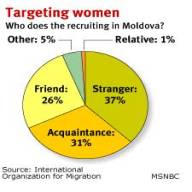
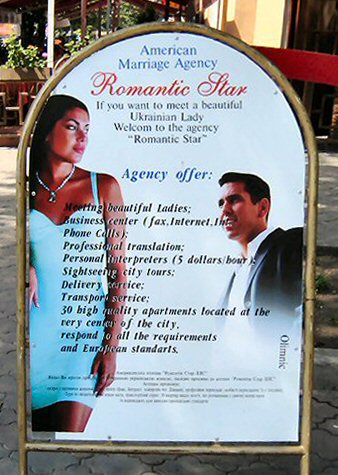
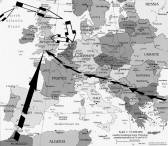
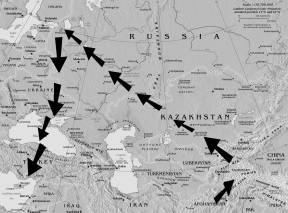
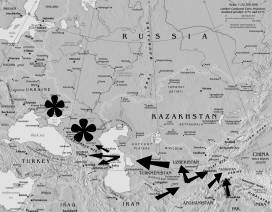
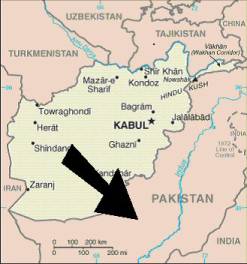
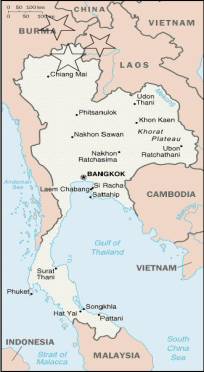
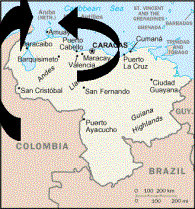
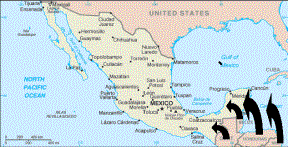
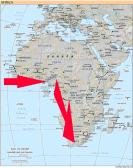 ica
is a growing consumer of drugs and a producer of crystal methamphetamine.
ica
is a growing consumer of drugs and a producer of crystal methamphetamine.